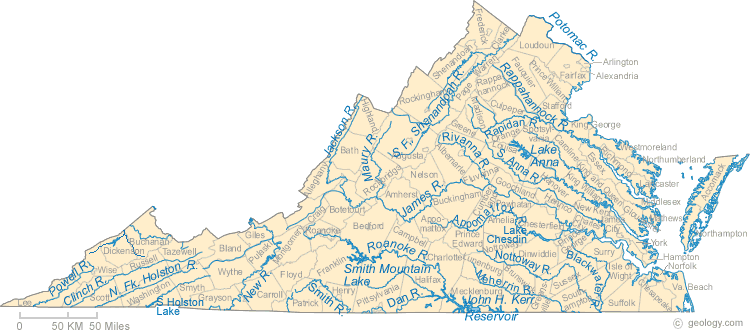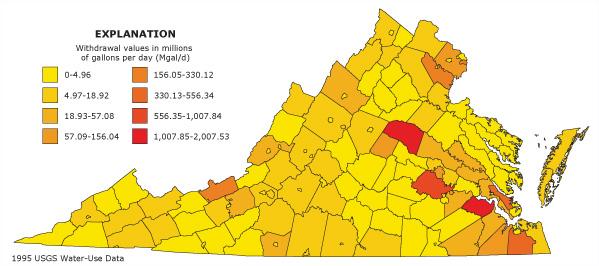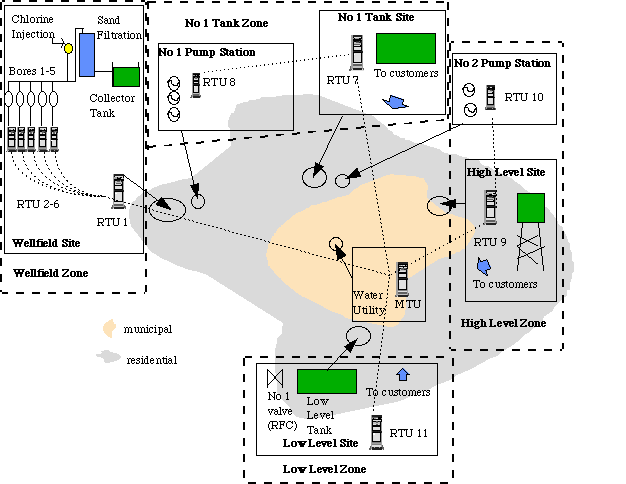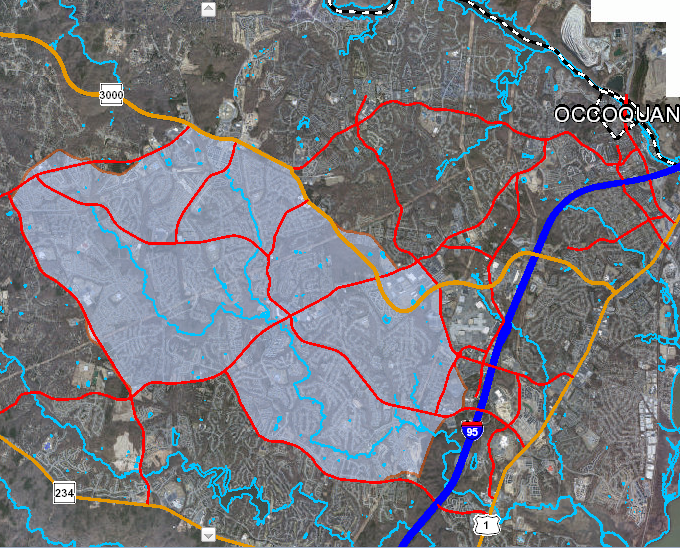History of Water Service in the State, Communities Served
Richmond, VA., pioneered water treatment plants in the United States with the establishment of a slow sand filtration plant in 1832. Nearly three decades had passed since multi-filter municipal treatments plants opened in Scotland and Paris but the rudimentary process sufficed in Richmond since the plant had just 295 customers and the city had plenty of land on which to build comparatively large sand filtration facilities (Hall & Dietrich 12-15). Besides, even the breakthroughs in bacteriological theory courtesy of Lister and Koch caused little concern since biological contaminants had yet to impact surface water sources and piped water in any significant way.
As of 2010, the Virginia Department of Health counts no less than 133 towns and cities that are serviced by 2,357 community systems and a total of 5,644 licensed public water system operators. The number of the latter is inflated by single-user or transient non-community water systems (e.g. groundwater wells at parks and isolated petroleum service stations). As well, one-third of state residents living in rural areas obtain water directly from nearby bodies of water or by pumping up groundwater.
Water Sources
Going by US Geological Service estimates, nearly all water withdrawals (95.7%) in Virginia were from surface water (US Geological Service para 2). The two-thirds of total withdrawals that is fresh water (including the minor fraction contributed by groundwater) originates principally from the John H. Kerr Reservoir in the southern part of the state(see Figure 1 below), four other lakes (Lake Anna, Lake Chesdin, Smith Mountain Lake and South Holston), and no less than twenty rivers: the Appomattox, Blackwater, Clinch, Dan, Jackson, James, Maury, Meherrin, New, North Fork Holston, Nottoway, Potomac, Powell, Rapidan, Rappahannock, Rivanna, Roanoke, Smith, South Anna and South Fork Shenandoah (Geology.com 1).

Daily and Annual Volume Consumption
At last count (1995), the total volume of water withdrawals in the state amounted to 8,260 million gallons per day (Mgal/d) or 3.015 trillion gallons annually. Best illustrating the difference between withdrawals and consumption is the fact that around one-third of the aforementioned surface water withdrawals is contributed by seawater drawn from the Chesapeake for cooling of thermoelectric power plants and assorted manufacturing facilities. Usage in irrigation is another example of fresh water drawn from streams and rivers but subsequently and rapidly returned (US Geological Service para 3).
That year, per-capita withdrawals in Virginia averaged 826 gallons per day, around one-fourth lower than the national average of 1,280 gallons per day but about 60% higher than for mid-Atlantic states in general: 509 gallons per day (US Geological Service para 2).
The greatest volume of water withdrawals are accounted for by four metropolitan areas: the Hampton-Portsmouth-Newport News, Surrey County, around Richmond-Petersburg-Charles City, and the Arlington-Fairfax locales (see Figure 2 below).

Water Treatment Procedures
In modern times, comparatively few communities can count on nearly pure surface water from which to draw drinking-quality supplies. Martinsville in the southern part of the state and close to John H. Kerr Reservoir is fortunate in being able to draw supply from the Jones Creek headwaters. More typical is the case of Henry County that must obtain supplies from the Smith River three miles below the town of Bassett or from Philpott Lake itself.
Hence, raw surface water is purified into drinking water using the modern multi-stage process mandated by the Virginia Department of Health. This process comprises, in sequence: settling basins (to let sediments sink and be separated), flocculation with alum, treatment with chlorine and/or intense ultraviolet light radiation (thereby sterilizing the water), reverse osmosis systems (used in Chesapeake city and meant to filter out both particles and biological contaminants), and oxygenation (fountainheads, to remove residual chlorine and other odors).
Pressurizing the Water Delivery Network
Community systems in the state, as elsewhere, now augment electric pumps by sending the water to water towers for intermediate storage. This has the combined virtue of coping with peak demand periods and maintaining pressure in the system. The force of gravity can maintain system pressure up to end-user faucets even when power goes out, as during a hurricane. A secondary benefit is that the pressure inside the pipes resists infiltration by ground water or raw sewage when the pipes spring a leak, as old systems often do.
Type of Piping Used and Installation Standards
Municipal systems largely use polyvinyl chloride (PVC/uPVC) with ductile iron pipes playing only a minor role in contemporary times. Since winter temperatures in the entire state can drop to the freezing point, as much of the distribution system as is practicable is laid underground. Such low temperatures also create a requirement for indoor heating, which means copper pipes are used indoors in residences, offices and commercial establishments.
Water Services Distribution Map

Water Services Distribution Map 2

Works Cited
Ezell, Barry C., Captain. Risks of Cyber Attack to Supervisory Control and Data Acquisition for Water Supply. Charlottesville, VA: University of Virginia, 1998.
Geology.com. “Virginia Lakes, Rivers and Water Resources.” Geology.com. 2010.
Hall, Ellen L. and Andrea M. Dietrich. “A Brief History of Drinking Water.” Opflow 26 (2000) 12-15.
U.S. Geological Survey. Estimated Use of Water in the United States in 1995: U. S. Geological Survey Circular 1200. Washington, DC: U.S.G.S., 2010. Web.